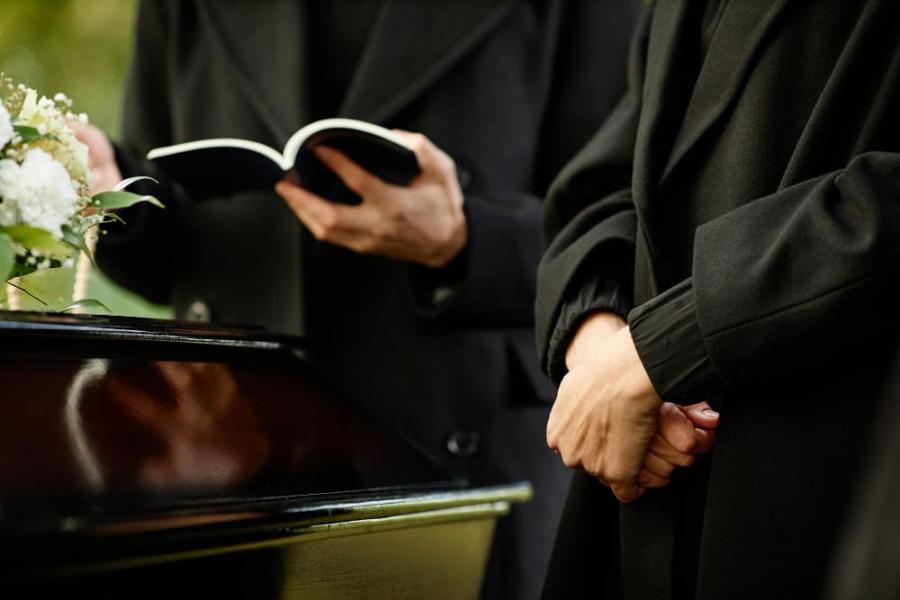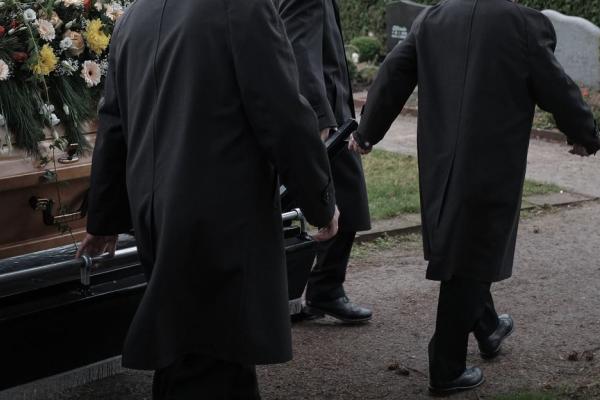
Humanist funeral: how it is organised
More and more families in Spain choose a humanist or civil funeral to pay tribute to their deceased loved ones. However, many people do not know how a humanist funeral is organised. With this in mind, Áltima will explain each step of the process.
What is a humanist funeral?
A humanist funeral is a ceremony in which a deceased loved one is honoured in a non-religious way.
In this type of civil ceremony, the deceased person is remembered in a very personalised way.
This type of funeral involves the relatives and closest friends of the deceased. It takes into account their wishes and remembers the highlights of their life, as well as important anecdotes and positive memories.
The objective is to pay tribute to the deceased person, sharing the affection of all the people who knew and loved him/her.

What is a humanist funeral ceremony like?
The main thing to keep in mind when organising a humanist funeral is that it is a personalised ceremony in which the deceased person is the protagonist. There are no religious references and the last wishes of the deceased person are taken into account.
Stages of a civil funeral
Generally, a humanist funeral ceremony consists of five distinct parts:
- Opening. At the beginning of the ceremony, the person who officiates the funeral welcomes the attendees and explains what the ceremony will consist of, since not everyone is used to non-religious funerals.
- Reflection. In the second phase of the ceremony, people closest to the deceased may wish to read different kinds of texts: poems, reflections about death, texts that were important to the deceased…
- Tribute. In this part, family and friends remember the experiences they shared with the deceased, sharing anecdotes and paying tribute to their life.
- Burial or cremation. In this phase the burial of the coffin or the cremation of the deceased takes place. It is the most solemn part of the funeral. Generally, silence prevails, although it can be accompanied by music.
- The end. Once the humanist funeral is over, the person who officiates it says a few final words of reflection and thanks family and friends for attending.
At a humanist funeral, however, this structure is neither fixed nor obligatory. The family can organise the event as they prefer and are free to add or reduce parts as they wish.

Where is a humanist funeral celebrated?
Humanist funerals can be held in the funeral home where the wake is held, in the cemetery or in a suitable oratory.
At Áltima, many of our funeral homes have multi-confessional oratories so that each family can adapt the ceremony as they prefer. In this way, relatives can celebrate not only humanist funerals but also those of a religious nature, if they prefer.
How long is a humanist funeral?
A civil funeral is usually brief and lasts about 20 minutes. However, this will depend on each family. Some funerals may last longer if more friends and family wish to participate in the readings or if there is music chosen that makes the ceremony go on a little longer. There is no fixed guideline.
Interventions
At a humanist funeral, a master of ceremonies must be chosen to officiate the ceremony. As it is not presided over by a priest, rabbi or other type of religious official, the person chosen can be someone who was close to the deceased.
Family and friends can also intervene (there is no established protocol number) both in the reflection phase and in the tribute phase, which may even be merged into a single stage of the ceremony.
Humanist burial
When we speak of a humanist burial, we refer to the civil tribute that takes place just at the time of farewell of the deceased, that is, when they are going to be buried in the cemetery or cremated.
It is a moment of silence, but it can also be accompanied by ambient music.
Those who choose a humanist burial avoid all religious symbolism, so there is neither a priest to say any final words, nor any prayers.
Readings for humanist funeral
There are different moments for readings at a humanist funeral. In the reflection phase, these may have some special meaning for the deceased. They may serve as a reflection about death or they could be non-religious funeral poems. But these readings will never have a religious context.
Then, in the tribute phase, these readings should be more personal and serve as a memory and tribute to the life of the deceased person. They can be prepared beforehand, but they can also be improvised. Anecdotes are often used to recall positive or funny moments during the life of the deceased. It's a kind way to remember them.
Long interventions are not recommended by participants in humanist funerals, as they should usually be brief and dynamic. The objective is to move family and friends in some way, not in a sad way but in a pleasant way, to honour the deceased person with beautiful and emotional memories.
And, both in the opening and at the end of the funeral, the person in charge of the ceremony must be clear and make sure everyone knows that it is the deceased who is the protagonist of the ceremony.


